How to Add a Facebook Pixel to Your BigCommerce Store
With over 1.5 billion daily active users, Facebook offers one of the largest audiences in the world for advertising your products.
Facebook also allows you to reach people at a much lower cost than other advertising options

Given its affordability and large audience, it’s no surprise that over 3 million businesses invest in Facebook Ads. There’s a good chance that you’re already using this service as well.
If you are indeed advertising on Facebook, then you absolutely must take advantage of the Facebook Pixel.
#cta-visual-fe#<cta-title>Fast and Flexible CMS For BigCommerce<cta-title>Gain full control over your site without sacrificing page speed with Shogun Frontend.Learn more
What is the Facebook Pixel?
The Facebook Pixel is a piece of code that allows you to track actions performed by people who land on your site from a Facebook ad.
The actions that can be tracked with the Facebook Pixel include:
- Purchase
- Complete Registration
- Add Payment Info
- Add to Cart
- Initiate Checkout
- Customize Product
- Start Trial
- Subscribe
This information alone is incredibly valuable. Without it, you would have no way of knowing whether your Facebook ads are effective or not. But with the Facebook Pixel, you’ll be able to tell if your campaigns are doing well, or if it’s time to shake up your advertising strategy.
Moreover, the Facebook Pixel allows you to create Custom Audiences for your Facebook ads. That means instead of targeting general demographics, you can specifically target people who’ve already been to your site and performed a certain action (purchase, add to cart, etc.). This is known as “retargeting”.
People who’ve already been to your store are much more likely to buy from you than people who haven’t. By using a Facebook Pixel to set up retargeting ad campaigns, you can get a bigger return out of your investment in Facebook ads.
Adding a Facebook Pixel to your BigCommerce Store
To add a Facebook Pixel to your BigCommerce store:
1. Before you can add a Pixel to your store, you’ll need to create a Pixel in the first place, of course. Log into your business’s Facebook account, open the menu in the top-left corner of your screen, and select the “Pixels” option in the “Measure & Report” section.
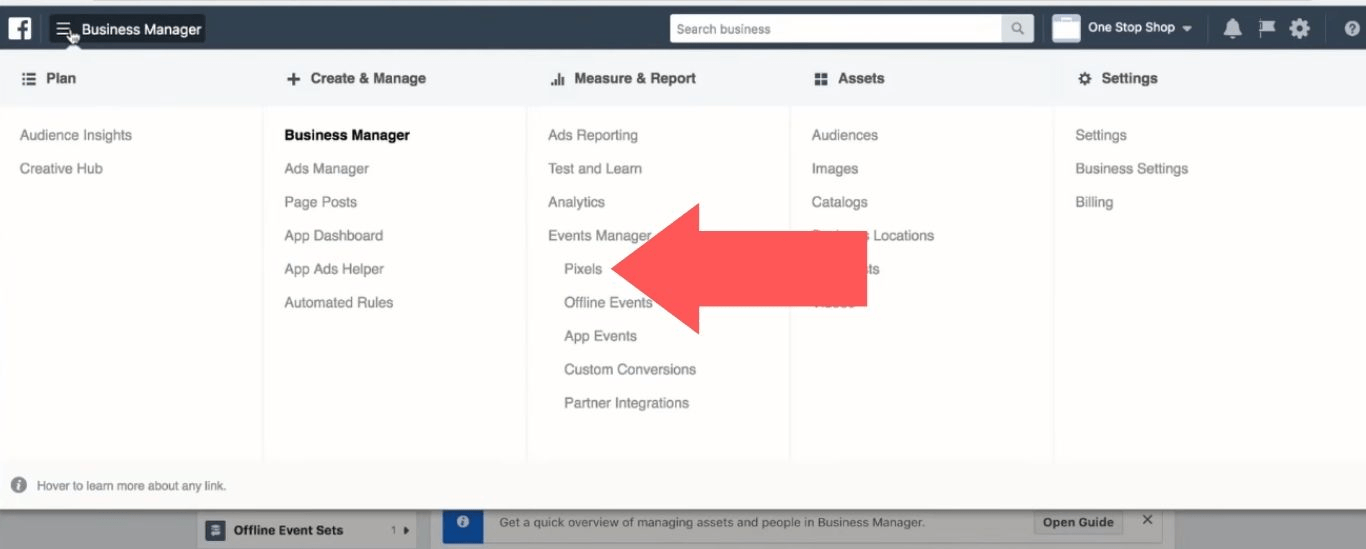
2. Open the “Add Data Source” menu and select “Facebook Pixel”
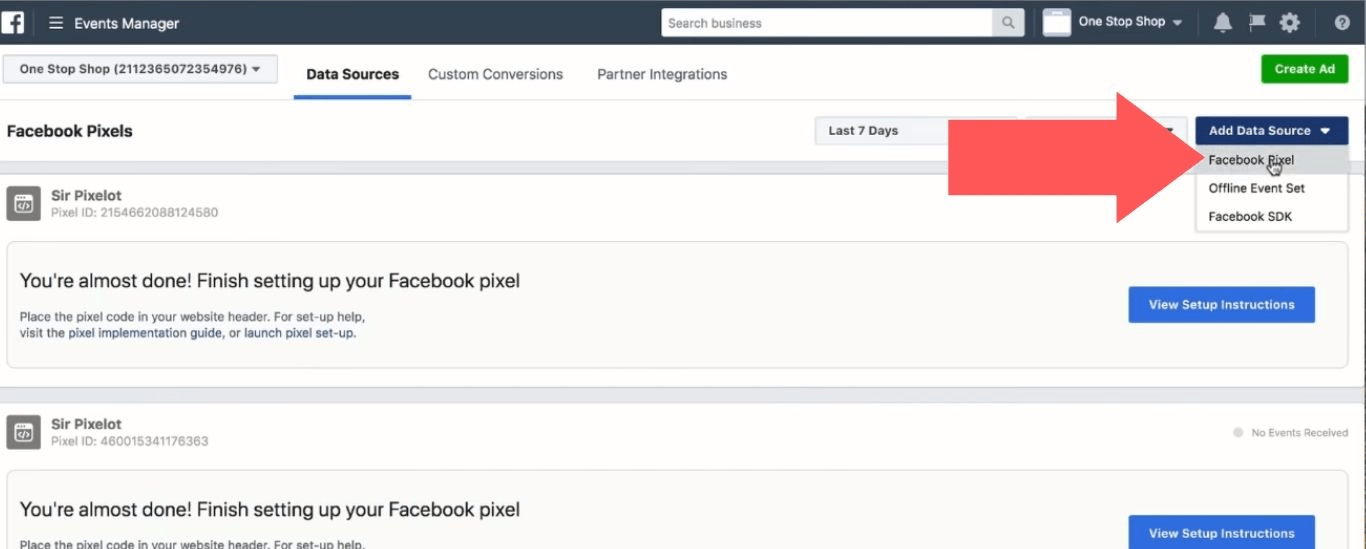
3. Enter a name for the Pixel and select “Create”
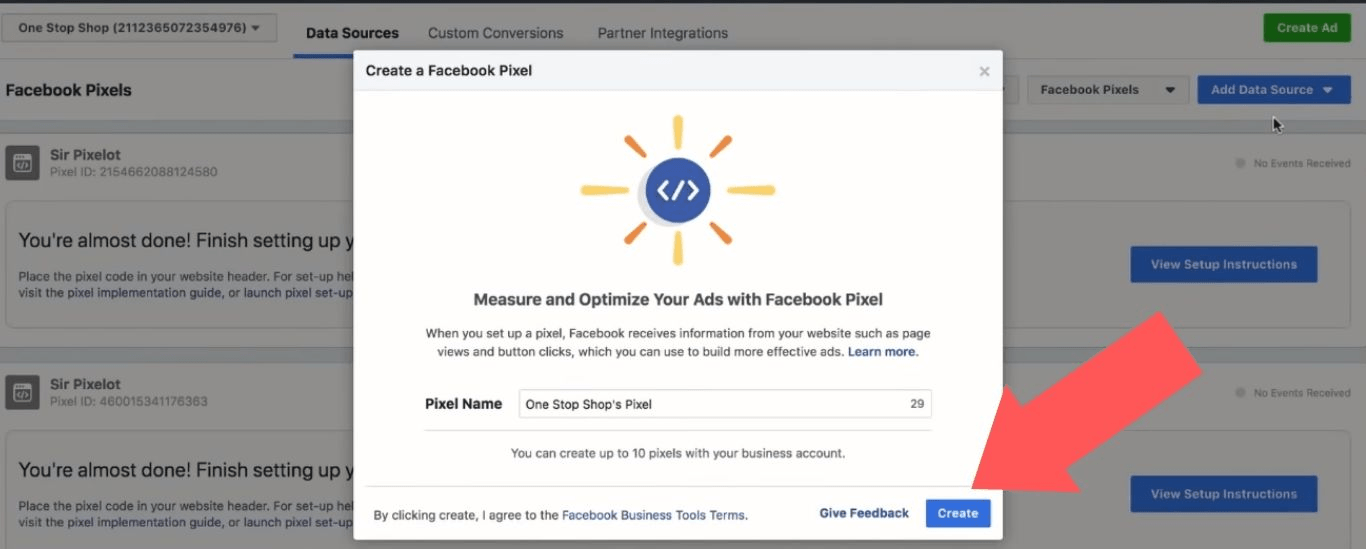
4. Copy the Facebook Pixel ID – you’ll need to use this information a couple steps later in the process.
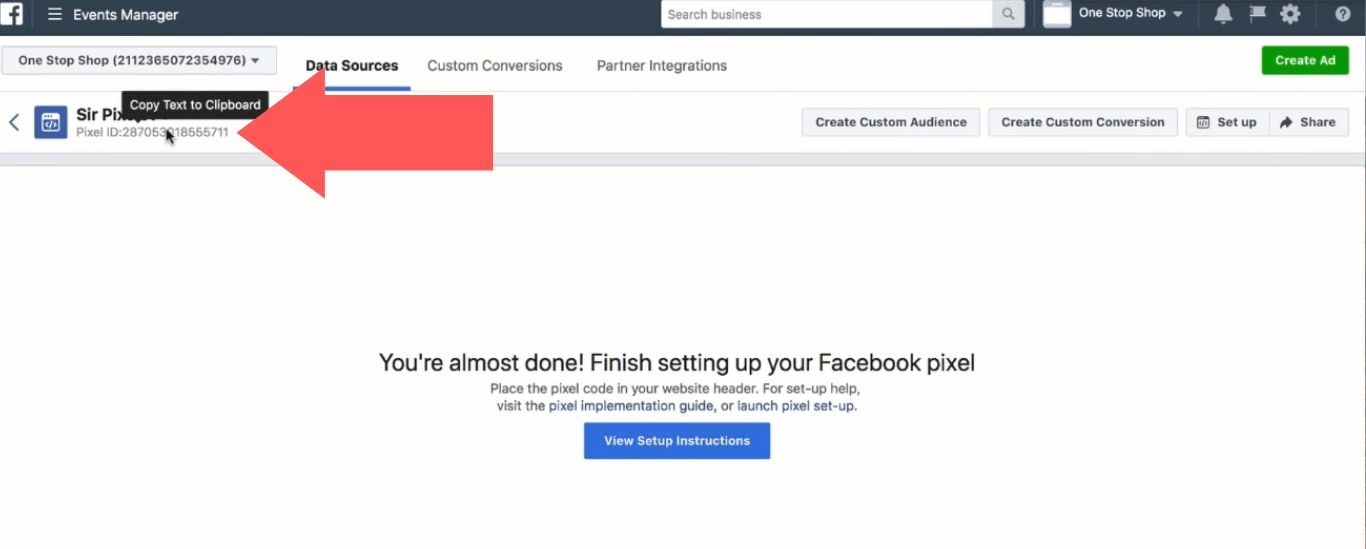
5. Now that your Pixel has been created, use your BigCommerce login credentials to access your store and select “Advanced Settings”.

6. Select “Web Analytics”
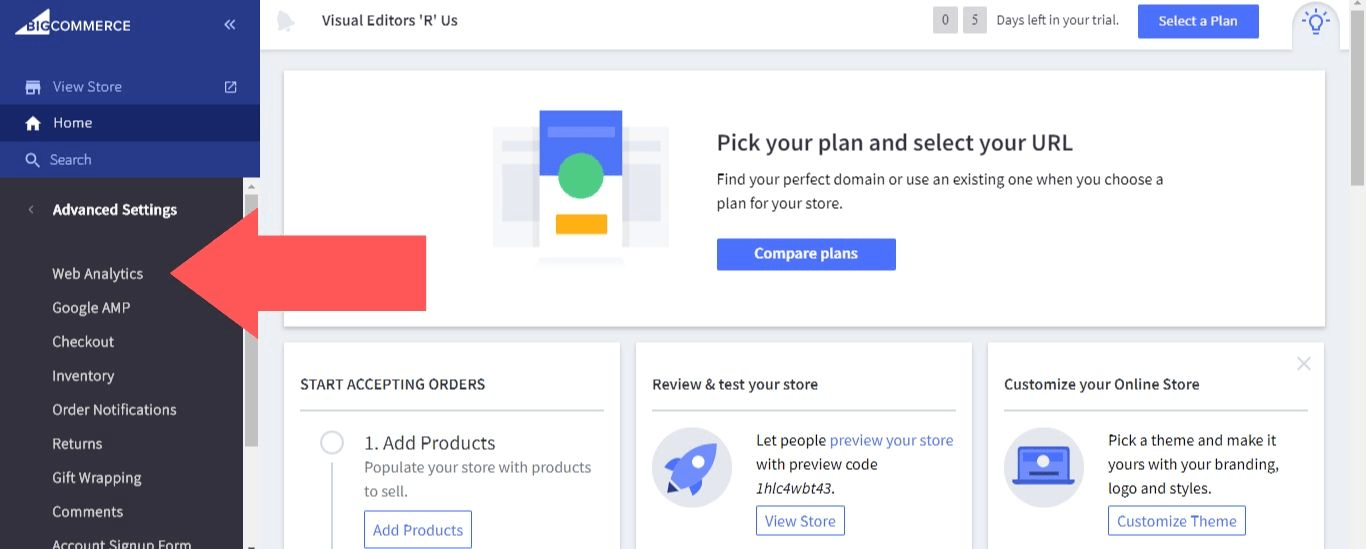
7. Check the box for “Facebook Pixel” and select “Save”
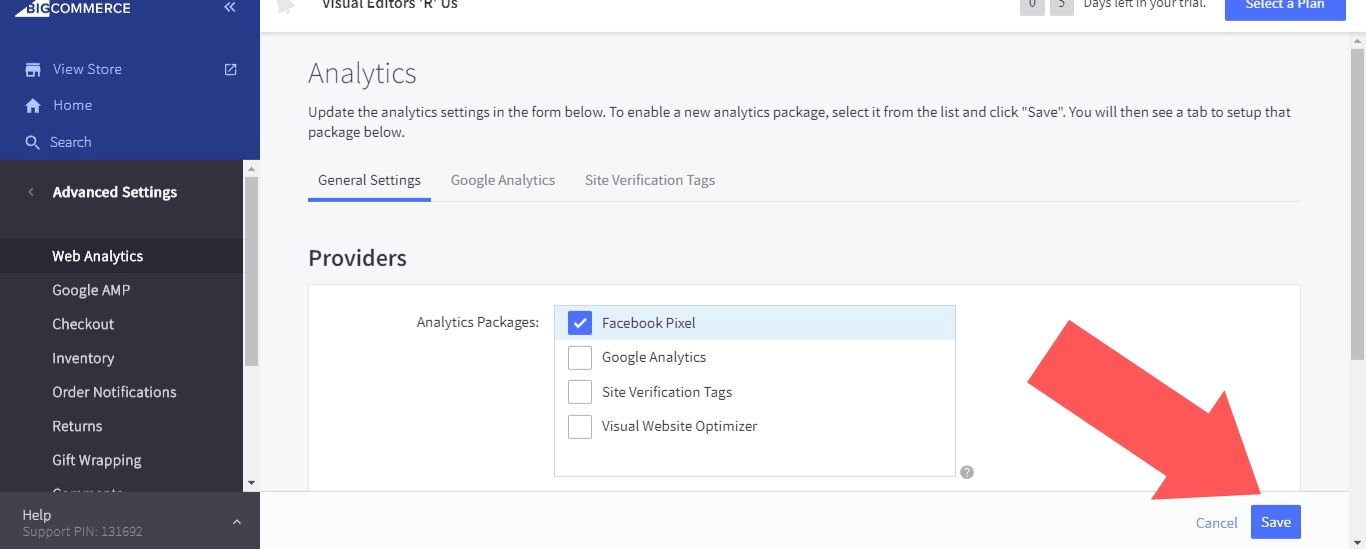
8. Open the newly-created “Facebook Pixel” tab. Enter your Facebook Pixel ID and select “Save” to finish adding a Facebook Pixel to your BigCommerce account.
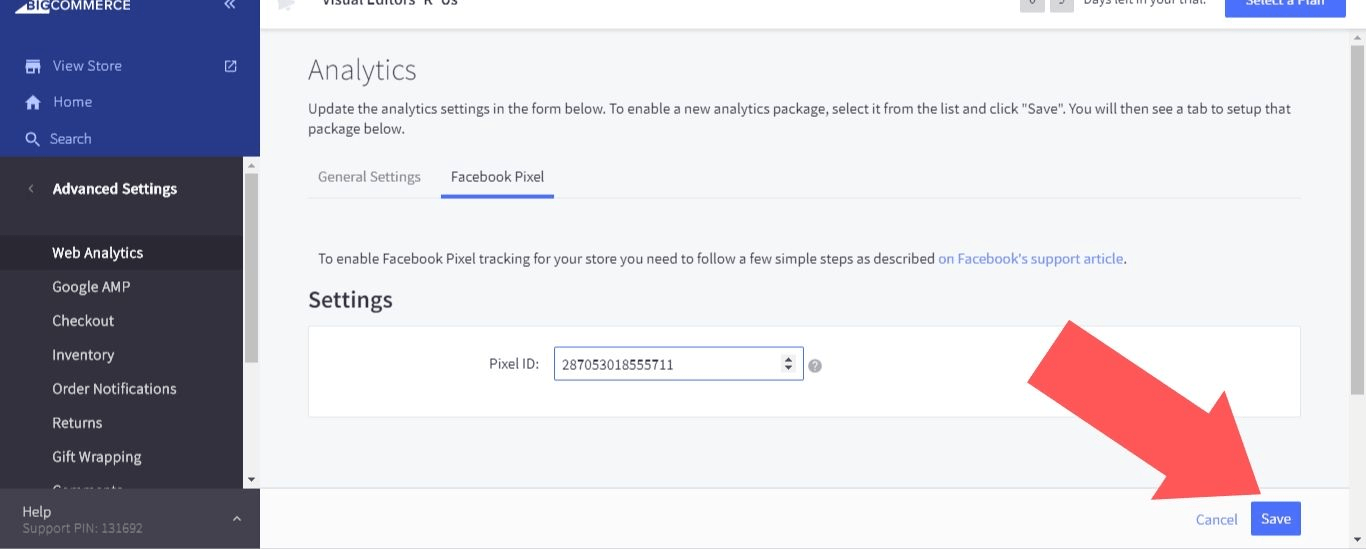
Collecting Information for Retargeting Campaigns
As we mentioned previously, one of the key benefits of the Facebook Pixel is that it allows you to create Custom Audiences for retargeting purposes. But if you’re only tracking a couple hundred actions or less per month, you’re not going to have enough information to really take advantage of this benefit.
Until you’re tracking more actions, your focus should be on building up a customer base on Facebook that you can use for creating Custom Audiences in the future.
If you have a list of existing customers that you’ve collected from another source, you can upload it to Facebook for this purpose.
While you’re working toward expanding your customer base, you should run campaigns that are based on demographics. This method will be more general than retargeting, but Facebook does give you enough filtering options with demographics for you to make fairly specific campaigns.
The most important demographic is location. If you only serve a local area, displaying ads across the whole county is going to waste your money on clicks that don’t convert to sales. In addition to location, you can include or exclude certain age groups, genders, and other factors such as lifestyles/interests as well.
At first, you should set up these ads so that they’re optimized for landing page views. Facebook gives you the ability to choose what your goal is when you’re creating ads. Out of all the available options, the landing page view goal is the best for driving traffic to your store and collecting information with the Facebook Pixel.
Once you’re tracking thousands of actions per month with the Facebook Pixel, you’ll have the information you need for effective retargeting campaigns.
#cta-visual-fe#<cta-title>Fast and Flexible CMS For BigCommerce<cta-title>Gain full control over your site without sacrificing page speed with Shogun Frontend.Learn more
Best Practices for Facebook Ads
So, let’s say that you’ve learned from the Facebook Pixel that your ads on Facebook are not effective.
What are you actually supposed to do with this information?
Even if you’re targeting the right audience, you still need well-designed ads in order to convince people to click. The following tips will help you improve the design of your ads and attract more traffic to your store:
Make Your Image Count
You know what they say: a picture is worth a thousand words. It’s a cliche, but it’s true.
It doesn’t matter how clever your ad copy is: you need to catch people’s attention, and nothing is better at catching attention than images.
The image you use in an ad doesn’t necessarily need to depict your products or services. It has to be relevant to your business or value proposition, but don’t sacrifice a striking, somewhat abstract image for something that’s more descriptive yet less eye-catching.
You must pay attention to the dimensions of your image, too. Upload the highest-quality image possible, and make sure the ratio of height to width is somewhere between 1.91:1 to 4:5 (or 1.91:1 to 1:1 if you’re including a link).
Follow the 5/20 Rule
AdEspresso analyzed hundreds of thousands of Facebook ads, and they found that you should use the following formula: five words in the headline, 20 words in the ad text.
The general principle at play here is that you want to keep your copy concise. People are just going to scroll right by walls of text. But if you choose your words more carefully and shorten the copy in your ads, you have a chance at holding the interest of Facebook users.
Express Your Value
You and your competitors are all fighting over the same pool of potential customers. This is a zero-sum game: if you allow your competitors to convince people that they offer the best value, there won’t be any customers left for you to snatch up.
What makes your service valuable? Maybe you have the lowest prices available, or perhaps the quality of your products is unmatched. Whatever it is, be sure to highlight this point in your ads.
Include a Clear Call-to-Action
Learn more. Subscribe now. Sign up today.
There’s a reason why you often see this type of language in advertising. It might seem a little cheesy, but studies clearly show that adding a call-to-action makes ads significantly more effective. And yet, that aforementioned AdEspresso analysis found that only 56% of Facebook ads use a call-to-action. This gives you an opportunity to do better than your competitors.
Check Out the Competition for Inspiration
Pablo Picasso once said that “good artists copy, great artists steal.”
Whenever you have a case of ad writer’s block, take a look at what your competitors are up to. You shouldn’t copy what they’re doing word for word, but this can set you off in the right direction and ignite your own creativity.
In fact, while we’re on the subject of checking out the competition, let’s review one excellent example of a Facebook ad so that you can see what the principles outlined above look like in practice.

This NatureBox ad certainly has a striking image, with its colorful array of snacks shot from a cinematic top-down angle. And NatureBox is able to keep their ad text concise by telling the Facebook user exactly what they do with just five words (“Deliciously wholesome snacks, delivered monthly”).
NatureBox provides additional value with their offer of a free trial, and this offer is appropriately expressed as a call-to-action (“try a free sample…”).
The only issue here is that the headline is a little on the long end with 10 words (“You Know You’re Going to Snack. Be Smart About It.”) instead of the recommended five. But NatureBox makes up for it by using 20 words in the ad text, exactly as recommended. The ad text is also smartly broken up into two paragraphs, which makes it even more readable.
It must be noted that the tips and example we covered in this guide are about single image Facebook ads. There are many other formats to choose from (video, collection, carousel, etc.), and you should experiment with these options to see what works best for you.
Use Shogun to Learn Even More About Your Customers
When it comes to analytics, there’s no reason to stop at what the Facebook Pixel is able to do for you. The more information you can collect about your customers, the better.
With its drag-and-drop interface and large library of pre-made content blocks, the Shogun page builder app makes it easy to create custom landing pages, product pages, and blog posts for your BigCommerce store.
Shogun offers additional features to BigCommerce stores as well. For example, it also helps you evaluate how your pages are performing. For each page created in Shogun, you can keep track of the following metrics:
- Total Sessions
- Bounce Rate
- Top Clickthrough Destinations
- Top Outside Referrers
- Sales Conversions
- Add to Cart Conversions
Your bounce rate (the percentage of people who land on the page but back out before clicking through to another one of your pages) is a particularly useful stat. This is one of the key factors that determine where Google and other search engines will rank your page in search results.
Shogun will show you if your page has a high bounce rate, which tells you that you need to increase page load speed, improve navigability, or make whatever other changes are necessary to bring it back down.
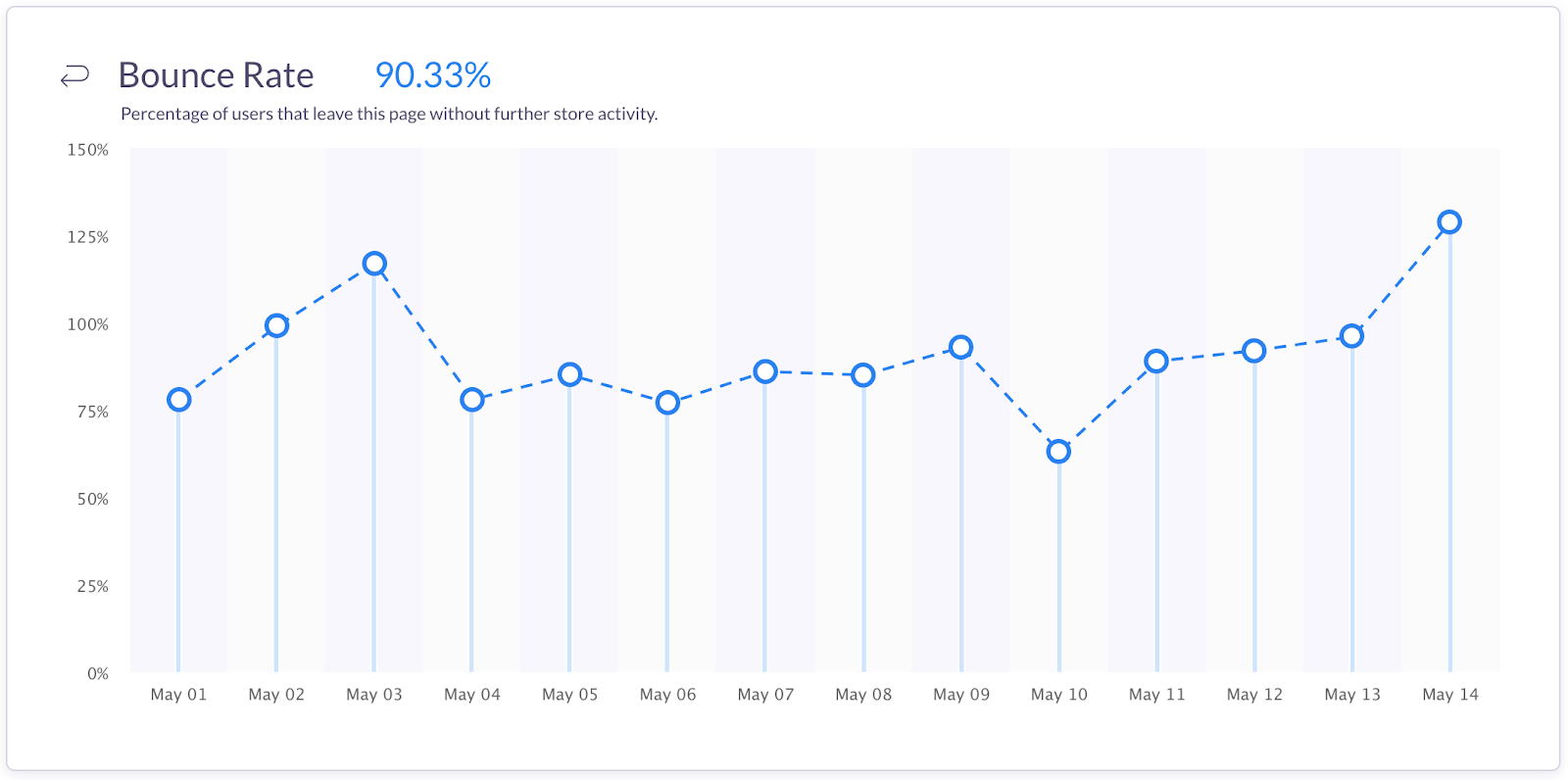
If you are making changes to a page, how can you confirm that the changes you’re making are for the best? You would need to compare the performance of the original version of the page to the performance of the updated version with changes to really know for sure.
Optimize Your Advertising
At this very moment, there’s likely something that you could be doing to improve the sales performance of your BigCommerce store. With a little tweak here and there, who knows how much more money you could be making?
From your advertising to the content on your store itself, the Facebook Pixel and Shogun page builder will give you the information you need to make the best version of your business possible.
#cta-visual-fe#<cta-title>Fast and Flexible CMS For BigCommerce<cta-title>Gain full control over your site without sacrificing page speed with Shogun Frontend.Learn more

Adam Ritchie
Adam Ritchie is a writer based in Silver Spring, Maryland. He writes about ecommerce trends and best practices for Shogun. His previous clients include Groupon, Clutch and New Theory.



